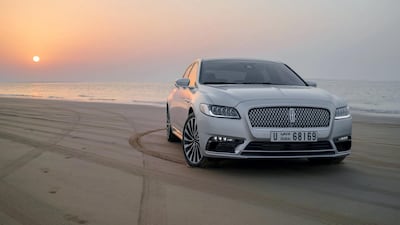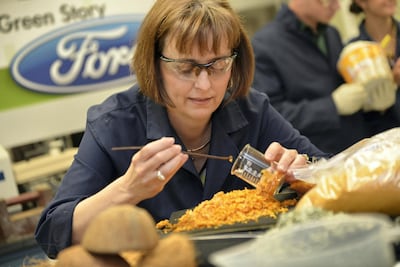It looks as though your morning routine isn't the only thing that will benefit from a caffeine boost; soon, the car you drive and the clothes you wear may be made from the coffee plant, too.
Every year, millions of kilograms of coffee chaff (the dried skin of the bean) come off during the roasting process. This is considered waste that would otherwise be burnt for energy or end up in landfill. Ford Motor Company and McDonald's USA joined forces last December and found a way to convert the chaff into a durable material that will be used to manufacture vehicle parts, such as headlamp housings and under-bonnet components.
Starting this year, McDonald’s will direct a significant portion of its coffee chaff to Ford to be incorporated into vehicle parts. It’s a timely move, ahead of Global Recycling Day, which is on March 18.
The Lincoln Continental 2020 is the first model to have coffee chaff headlamp housings. While manufacturing will take place in North America for now, exports to other parts of the world, including to the Middle East, are in the works.
"Through extensive research and testing, the companies found that by heating the chaff to high temperatures under low oxygen, mixing it with plastic and other additives, and turning it into pellets, the material can be formed into various shapes for car parts," Debbie Mielewski, senior technical leader of materials sustainability at Ford, tells The National.
Waste minimisation aside, the parts made using coffee chaff are approximately 20 per cent lighter, which in turn will make vehicles more fuel efficient. "By reinforcing these car parts, which are traditionally made from 100 per cent virgin plastic, with a percentage of plant or bio-based materials, we are using significantly less virgin plastic, saving energy and reducing greenhouse gas emissions," says Mielewski. "Moreover, these parts take up 25 per cent less energy during the moulding process."
Ian Olson, senior director of global sustainability at McDonald's, says by using coffee chaff as a resource, "we are elevating how companies can increase participation in the closed-loop economy". Mielewski adds: "The future could see new cars and more widespread applications, delivered across the globe."
Coffee waste is not restricted to car parts, either. Closer to home, H&M announced its Conscious Collection would feature a dye made from coffee grounds and fabric made from circulose, or discarded cotton. The clothing chain's collection, which drops in the UAE on Thursday, March 26, will also include vegan leather from Italian tech company Vegea.
Brand collaborations are hardly new, but when industries come together for worthy causes it can have far-reaching results for the planet, as well as helping to change people's perceptions and improving each brand's profitability.
"Companies need to look beyond their own walls for ways to collaborate for the greater good," says Mielewski. "Partnering is a great way for mutual benefit to companies across industries – both for businesses and for the environment."Pascal Brun, H&M's sustainability manager, adds that the concept of circularity has to be taken to the next level – by both brands and us, the consumers. "It isn't just about materials, it's about how we can design clothes to last longer and to be eventually recycled, and how can we approach our customers to have more sustainable behaviour."




